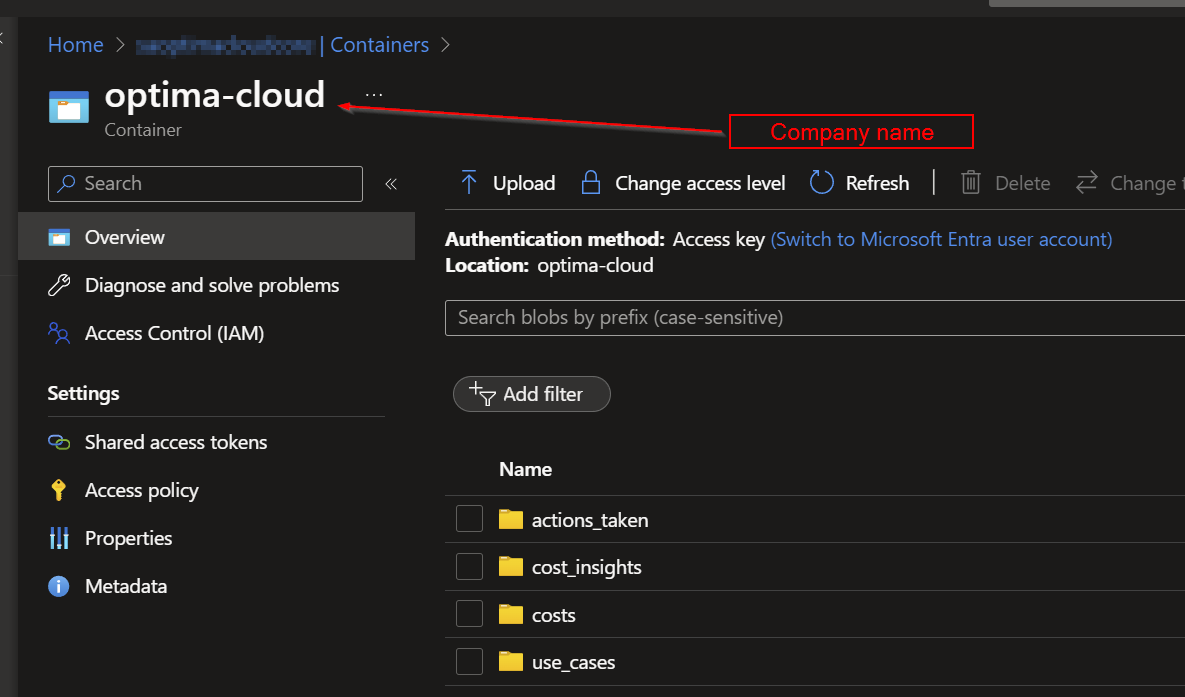CSV Files
Files produced by the application are generally comma separated or JSON formatted. You can use these files for your benefit, even script processing. We visualize the content of these files inside PowerBI.
[!NOTE] Please don't modify these files manually, changes can cause runtime errors and will require revert to previous version
Storage Account View
This is how structure of a storage account can look like.

The container name is the name of the company and several folders inside. Folders contain the CSV and JSON files.
Resources identified by the Use Cases are inside use_cases folder.
Because each resource can be identified by more than one use case and
we don't want to count those savings twice, merged result is in cost_insights/candidates.csv. candidates.csv file has each resource shown only once, while the format of the file is same as of files in use_cases, use case name is the one that has highest cost saving opportunity.
Costs file
File has costs for each resource that is supported by the application. It doesn't contain all the resources inside your tenant, but more than 70% of possible costs are there.
Contents of this file are compact, compared to the detailed monthly dumps that Azure provides.
Data model and location of this file is described here.
Actions Taken file
Results of all detected actions are stored in this file. Resources that are identified by one of our use cases are being checked during each scan for changes. Changes can be deletion, resize of the resource or simply price change (significant decrease of price from month to month). When such a change is detected, it is stored in this file.
Data model and location of this file is described here.
Use Case identification and Candidates
There are multiple files, but the format is the same. Files store identification results from all the use cases.
Data model and location of files is described here.